Research
For the full list of publications, see arxiv, Inspire,or ADS
Tests of Evolving Dark Energy with Geometric Probes of the Late-Time Universe 2509.26480
Recent results from the Dark Energy Spectroscopic Instrument (DESI) have shown a strong statistical preference for a time-evolving dark energy model over ΛCDM when combining BAO, CMB, and supernova (SN) data. We investigate the robustness of this conclusion by isolating geometric information in weak lensing measurements from the DES Year 3 survey and combining it with different datasets. We introduce a hyperparameter, Omega_m^growth, to decouple the growth contribution from the lensing 2-point correlation and thus bypass the possible effect of the sigma_8 tension in our analysis. We then combine with the late-time geometric probes provided by BAO and SN, along with CMB primary data. The preference for evolving dark energy is consistent with the DESI-DR2 findings: when combining BAO, primary CMB, and weak lensing data, the w0waCDM is preferred at about the 3σ significance. However, when we add SN, the result is sensitive to the choice of data: if we leave out z<0.1 SN data in the analysis, as a test of the effect of inhomogeneous calibration, we obtain a statistical significance below 2σ for time evolving dark energy. Indeed, the high-z only SN data lower the evidence for evolving dark energy in all the data combinations we have examined. This underscores the importance of improved SN samples at low redshift and of alternative data combinations. We show that cosmic shear measurements with LSST Year 1 data will provide comparable power to current SN data. We discuss other low-redshift probes provided by lensing and galaxy clustering to test for evolving dark energy.
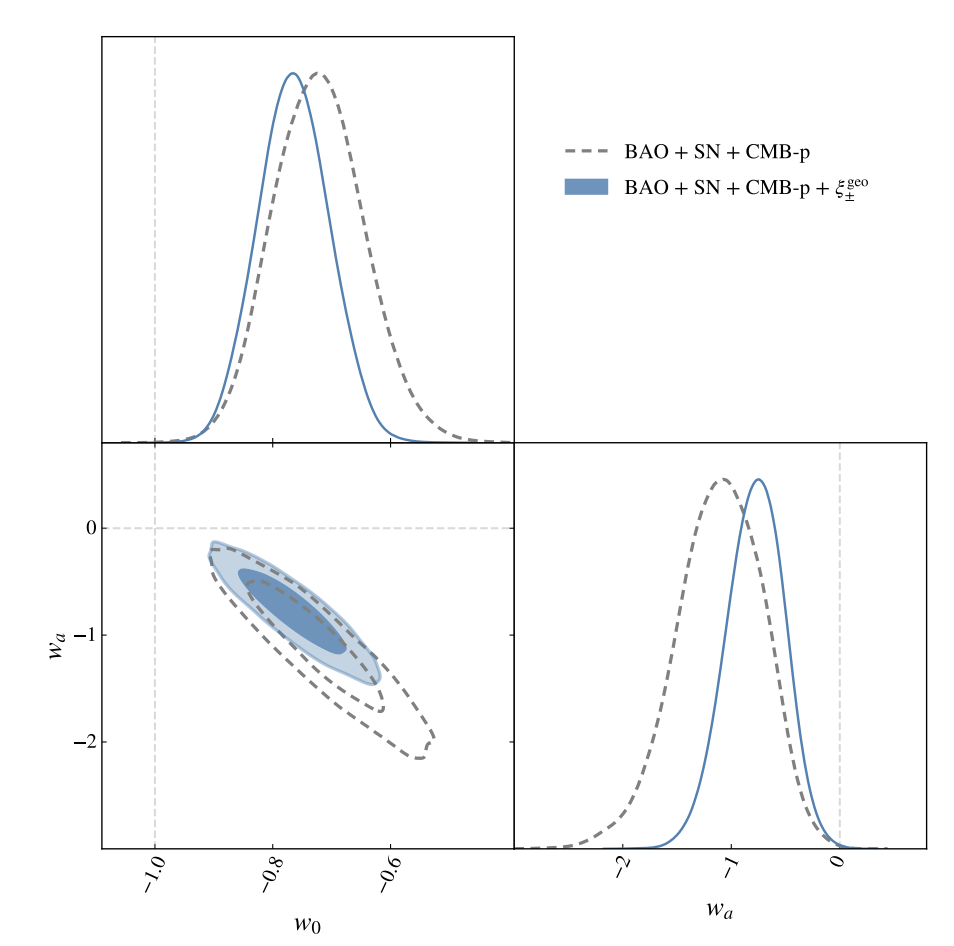
Fast Generation of Weak Lensing Maps with Analytical Point Transformation Functions 2411.04759
The study of large-scale cosmic structure traditionally relies on computationally intensive N-body simulations. While these simulations provide highly accurate results, they are resource-intensive and time-consuming, creating a bottleneck for modern cosmological analyses. We present a novel approach using General Point-Transformed Gaussian (GPTG) functions that significantly improves upon existing Log-normal approximations. Our five-parameter GPTG method not only preserves power spectrum matching capabilities but achieves 2-5 times better accuracy in reproducing key statistical properties of N-body simulations, including higher-order moments and topological features. This breakthrough enables rapid generation of realistic cosmological maps on standard computers, making it particularly valuable for next-generation surveys like the Rubin LSST. The method’s analytical simplicity and robust performance across different cosmological parameters make it especially promising for field-level inference and covariance estimation applications.
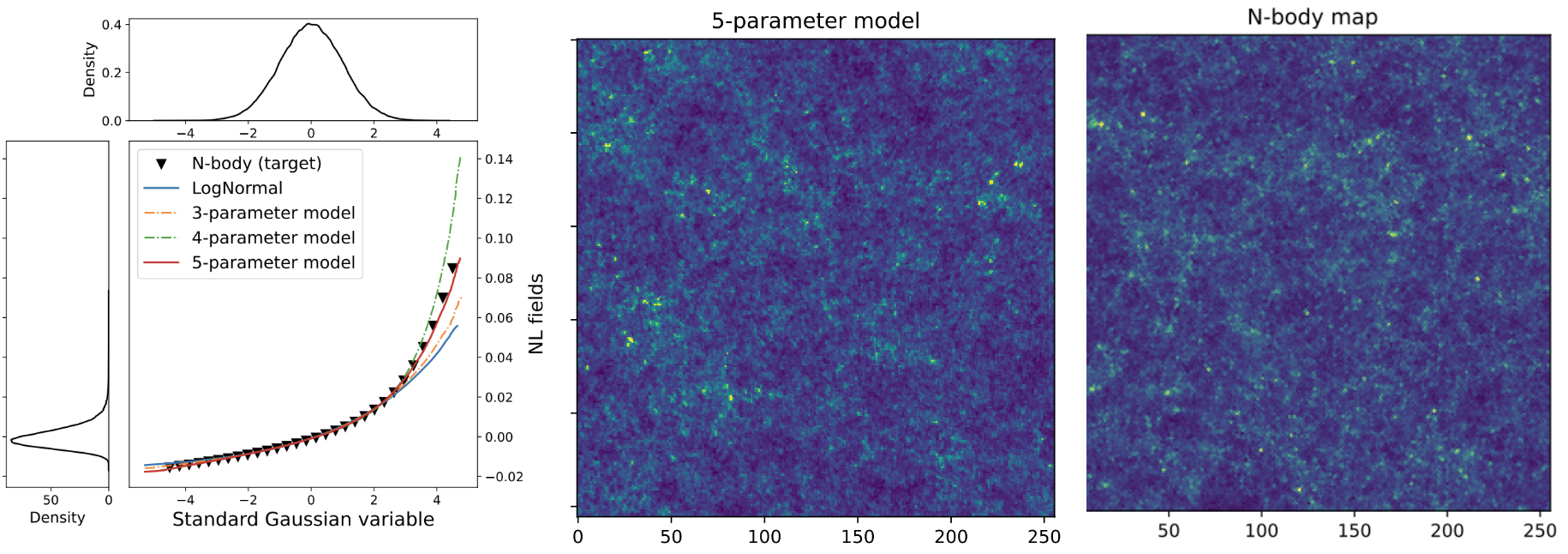
Simulation-Based Inference with Convolutional Neural Networks 2403.01368
Simulation-Based Inference (SBI), also known as Likelihood-Free Inference, is a novel approach within the Bayesian framework designed to determine the posterior distribution when the likelihood function is intractable. This technique proves invaluable in scenarios where direct simulation of the physical process is possible. It has seen considerable application in understanding neural behavior and holds significant promise in cosmology, especially in extracting non-Gaussian information critical to unraveling the universe’s history and the nature of dark energy and dark matter.
Convolutional Neural Networks (CNNs), traditionally employed in image classification tasks, such as with ResNet designs, offer a powerful means for data compression in SBI at the field level. However, cosmological data differs markedly from typical machine learning or computer vision images, characterized by stochastic properties and a low signal-to-noise ratio. In this work, we introduce a novel regularization and data augmentation strategy that significantly enhances CNN performance. By shuffling feature maps, we disrupt large-scale correlations, mitigating overfitting and co-adaptation more effectively than traditional methods like dropout. While this approach is not a one-size-fits-all solution, its potential for broader application, including in galaxy maps or 21cm maps, is promising.
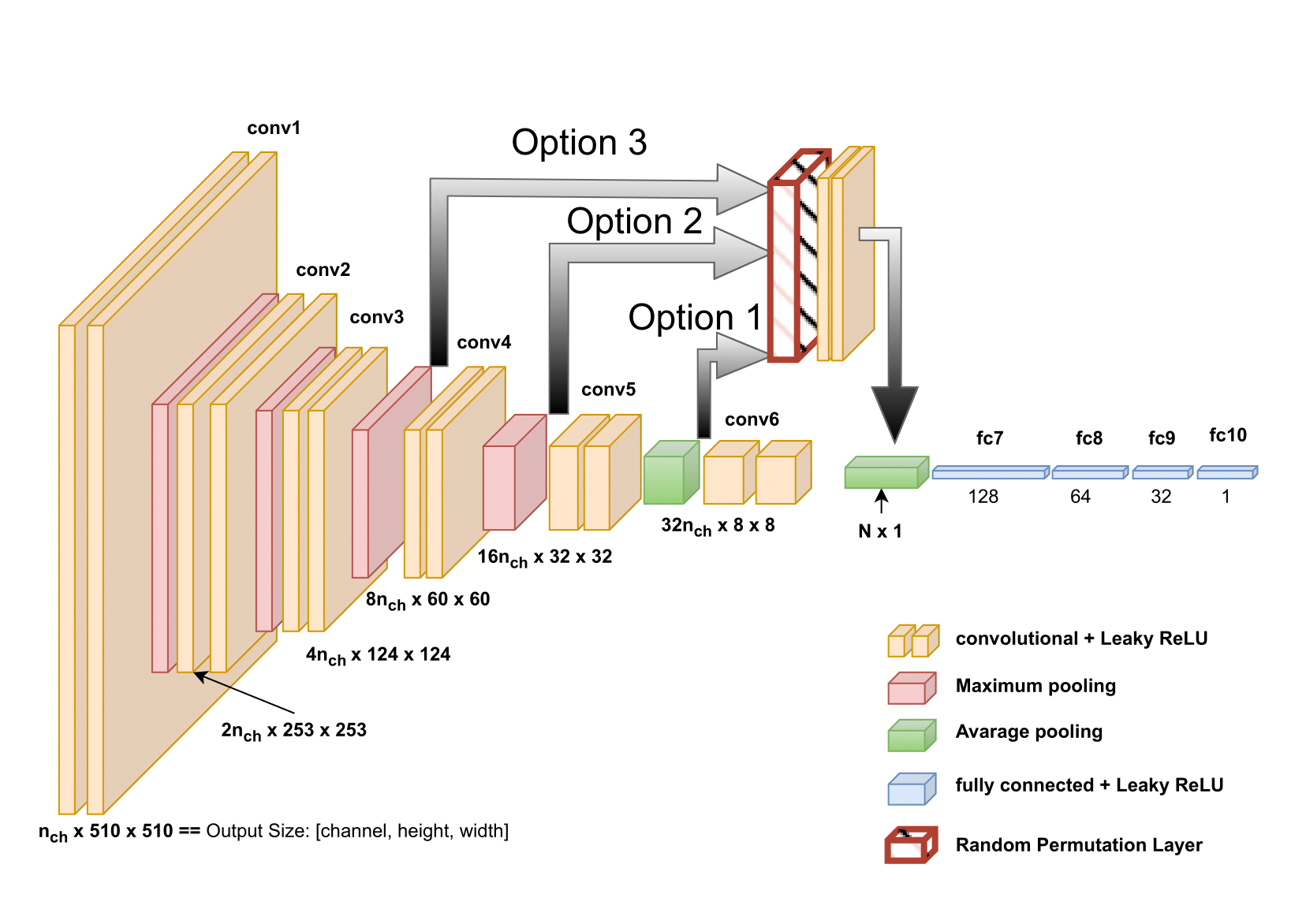
Emulator of the weak lensing data vector 2402.17716 2403.12337
The computation involved in weak lensing and galaxy clustering analyses is notoriously demanding. Despite improvements from OpenMP and MPI, the precision and systemic calculation requirements of next-generation analyses, such as those in the growth-geometry project, are immense. Typically, running about 100 chains for varied priors and analysis settings could take several months and consume vast computational resources.
Recent advancements propose using Neural Networks to accelerate these calculations, achieving speed increases by approximately 3000 times. Consequently, processing a weak lensing chain on an AMD EPYC 7642 48-core node with four workers is reduced from roughly a month to less than a day.
Traditional emulators are presumed to function within the fiducial contour alone, limiting their utility for real-data application or comprehensive parameter space analysis. Our work makes significant strides by incorporating Transformers and Self-attention mechanisms, enabling theoretical optimality in emulator accuracy across the entire prior space. This breakthrough allows for previously unfeasible comparisons and applications, leveraging the neural network’s speed.
In the first two of a serers of investigations of emulator approach, we forcast the constraining power of growth-geometry split formalism in LSST Year 1 data, and the calibration of different tension metric with intensive noise injection. Both of these work shows the great potential of an emulator that is highly accurate within a wide parameter space.
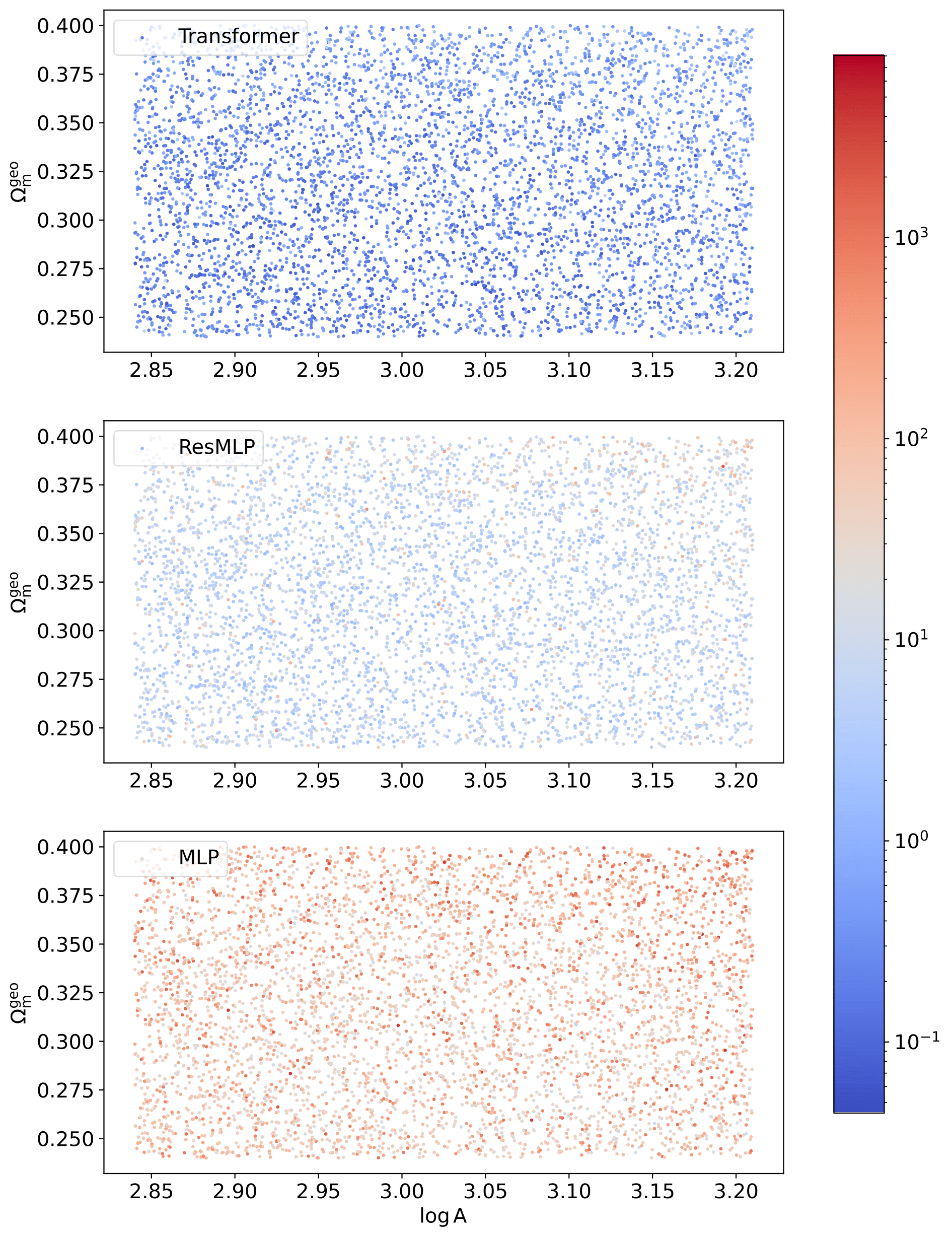
Growth and Geometry Split in Light of DES-Y3 Survey 2301.03694
In the LCDM and models that only modifies the expansion history, the overdensity of matter evolves in the same way as the background, characterized by the growth function. The evolution equation of the growth function only depends on the matter density today in LCDM. However, that is not true in any modified gravity and dark energy clustering or coupled to dark matter model. We test this relation by introducing a meta parameter that doesn’t enter into the geometry but the growth of the LCDM and wCDM model. We carefully chose the geometry prior such that the constraining power only comes from dark energy survey (DES) weak lensing and galaxy clustering data and found no inconsistency between growth and geometry.
The main results are as follows. For both DES-Y1 and DES-Y3 data, we find no inconsistency between geometry and growth. The set of choicec in our work makes the treatement of non-linearities clear as compared to other work. We will extend the work to future DES-Y6 and LSST-Y1 data.
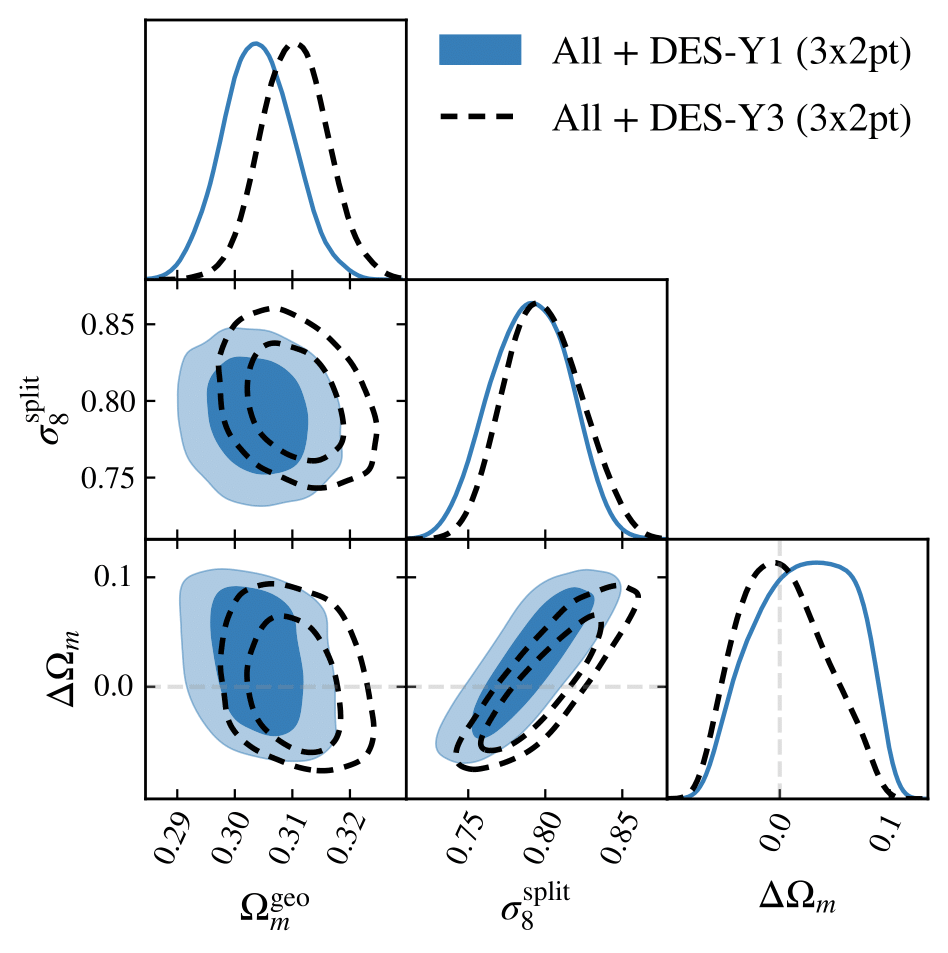
Marginalizing EDE Predictions over Late Expansion 2302.07333
The Early Dark Energy(EDE) is a promising solution to the current Hubble tension. The simplest model of EDE however is inconsistent with the current large-scale structure data. We marginalize the late time expansion rate and test with different data set to see if a late time modification can save the EDE model.
The most obvious problem of EDE as a solution to the hubble tension is that it harms the goodness of fit to the CMB. Here, we show that by a very general late-time DE evolution (a binned w model up to 10 bins), the two problems of H0 and LSS cannot be simutaneously solved.
Micro-physics of Dark Energy: Anisotropic Stress and Sound Speed 2408.14628
In the fluid description of dark energy, the perturbation is usually turned off artificially due to gravitational instability. In Post-Friedmann(PPF) prescription, the problem was solved by a gauge transform and matching the dark energy perturbation to that of dark matter at the large scale. The anisotropic stress part of this description is often ignored, and in this study we use the latest large-scale structure data along with CMB anisotropy at large scale to constrain the shear term. We also studied another phenomenological model of anisotropic stress and scaler field model that introduce sound speed.
The modified version of Boltzmann code CAMB and CLASS can be found on my GitHub. Unfortunately they are currently with different Boltzmann code, in the near future, we plan to implement the sound speed into CAMB, as it can be easier to integrate into the weak lensing analysis pipeline.
